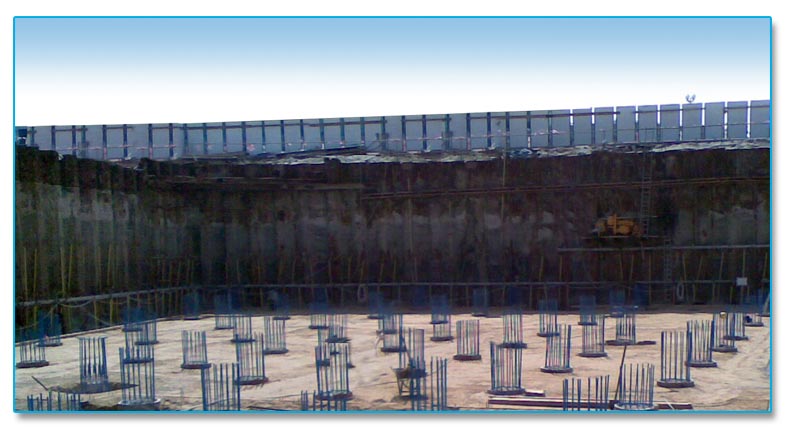01 PILING
Piling
Concrete Piling
A concrete pile is a component in a pile foundation which is driven into the ground to ensure that the foundation is deep. Pile foundations can use large numbers of concrete piles during their construction, with the piles connecting to the footers of the foundation. The piles distribute the weight of the finished structure safely, reducing the risk of structural failure or collapse. People can often see examples of concrete piles at urban construction sites, as contractors tend to build tall in urban areas to maximize the potential uses for a building.Once the concrete has cured correctly, the timber frame may be removed, leaving a slab of reinforced concrete joining the pilings. Now the rest the building's structural work may begin, using these slabs as foundation points.Deep foundations such as pile foundations can be chosen for a number of different reasons. In some cases, the sheer size of a building may dictate the use of a deep foundation because a shallow foundation could not support the building. The underlying ground can also be a factor, as some types of ground cannot support a building safely, and a deep foundation may be used to anchor a building to bedrock. Seismic activity is another thing which can influence foundation decisions, as earthquakes can be a safety concern.

Concrete piles are typically made with steel reinforcing and pre-stressing tendons to obtain the tensile strength required, to survive handling and driving, and to provide sufficient bending resistance.Long piles can be difficult to handle and transport. Pile joints can be used to join two or more short piles to form one long pile. Pile joints can be used with both precast and prestressed concrete piles. Pre-cast or pre-stressed concrete piles are one of the most commonly used concrete piles. More than 40% of our jobs involve concrete piles due to their relatively low material cost, custom lengths and ready availability. The cost of concrete pile can be varied based on design loads, dimensions and length required; getting the load bearing capacity needed without costly material waste. Additionally concrete piles can be ready to drive in 14 days, as opposed to steel piles which can take from 6-8 weeks to receive from a mill. Our experience and knowledge of soil mechanics and job requirements help our clients save time and money and can help avoid costly delays.
Concrete Pile Splices
Splicing is called for when pile lengths required are too long for trucking or driving in one piece with the available equipment, or if there is a headroom restriction. A pile may have one or more splices. The splice should be capable of resisting stresses induced by driving, and service loads and conditions. Tensile stresses are highest when resistance to driving is low and tensile waves are reflected back up the pile. Moment capacity is particularly important in high seismic zones, in piles possibly subject to impact, and in difficult driving conditions. Not all splices will develop tension and/or moment capacity.
Secant Piles
Secant piles are constructed so that there is an intersection of one pile with another. The usual practice is to construct alternative piles along the line of the wall leaving a clear space of a little under the diameter of the required intermediate piles. The exact spacing is determined by the construction tolerances which can be achieved. These initially placed piles do not have to be constructed to the same depth as the intermediate piles which follow, depending on the way in which the wall has been designed and reinforced.
Concrete is added and before it has fully set the intermediate holes are drilled along a parallel, but slightly offset, line so that the holes cut into the first piles. The intermediate piles are placed through a heavy casing whose cutting edge is toothed and enables the casing to cut into the concrete of the initial piles on either side. Subsequent concreting results in a continuous wall. The concrete chosen will often have a slow rate of setting in order to ease the problem of cutting one pile into another.
Back to Services